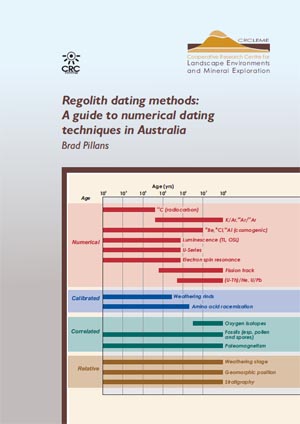Regolith Dating Methods

Brad Pillans
Click here for free download (0.6 Mb PDF)
Prior to the 20th century, notions of geological age and time
were founded in the principles of geological correlation and superposition.
Fossils and stratigraphy were the main tools but the resultant geological
timescale was still only a relative timescale. In other words, geologists
could say that one rock was older than another, but they couldn't
say how much older. In 1905 all that changed dramatically when Ernest
Rutherford first proposed that radioactive decay could form the
basis of dating minerals.
Geologists now have access to a seemingly bewildering array of
dating methods, which increasing yield precise and accurate numerical
ages for geological materials. However, not all these methods can
be applied to dating the often highly weathered, non-fossiliferous,
Australian regolith, or if they can, they require modifications
of existing methods which have been successfully applied to fresh
rocks.
Brad Pillans realised that there was a need for a publication which
would summarise the types of dating methods which could be used
in regolith studies, and also inform readers of such things as the
types of materials which could be dated, the age ranges over which
the methods applied, and the locations of the labs where samples
could be dated. "Regolith Dating Methods" is the result.
Includes information on:
- Radiocarbon
- Potassium-argon and argon-argon
- Cosmogenic isotopes
- Luminescence
- Uranium series
- Electron spin resonance
- Fission track
- Amino acid racemisation
- Weathering rinds
- Palaeomagnetism
- Stable isotopes
- Pollen, spores, dinoflagellates and acritarchs
|
